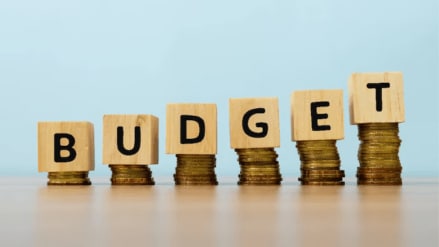The Centre, which is on course to set its fiscal deficit below 4.5% of the Gross Deomestic Product (GDP) in 2025-26, in line wih the current fiscal consolidation path, may unveil a new medium-term road map for public debt to be on delining trajectory in the coming Budget.
According to sources, the new debt-linked roadmap may require fiscal deficit to remain just below 4.5% for the next few years, raher than a steeper decline in this period. However, for the debt reduction plan to hold, the fiscal deficit would be required to fall to nearly 3% by FY31, the terminal year of the 16th Finance Commission award period, the sources added.
“Currently, growth and employment are top priorities for the government given the global uncertainties. It may not bring down the fiscal deficit substantially in the next few years. There is no need to be unduly concerned about any criticism this might draw from rating agencies,” an official said.
Besides a likely slower pace of nominal GDP growth, the government’s likely giveaway of around Rs 50,000 crore in income tax relief to the middle class, won’t provide much scope to bring down fiscal deficit to sharply lower than 4.5% in the next financial year.
After the Centre’s fiscal deficit shot up to a record 9.2% in Covid-hit F21, it re rolled out a consolidation path in the FY22 Budget to bring down the fiscal deficit to below 4.5% of GDP. It was at 5.6% in FY24 and is estimated to be 4.9% in FY25.
Tweaking the current fiscal consolidation path driven only by fiscal deficit targeting, the Budget presented on July 23 lastyear announced a new regime which will be based on an annual reduction in the debt-GDP ratio from FY27 onwards.
“If the general government (centre and states) debt is targeted to be brought down from a little over 80% of GDP now to 70% by the end of the 16th Finance Commission award period, the fiscal deficit should be somewhere close to 3.5%,” Madras School of Economics director N R Bhanumurthy said.
In 2017, the NK Singh Committee recommended a ceiling for general government debt of 60%–40% for the Centre and 20% for states.
Bhanumurthy said a 60% target for general government debt is not feasible in the current environment. Instead, it should be 70% with the Centre at 45% and the states at 25%, he said.
The Centre’s capex, which was estimated to be 3.3% of GDP for FY25, should be capped at 3% of GDP equivalent to the prudential level of fiscal deficit, to free up resources for private investment, he said.
ICRA chief economist Aditi Nayar said the fiscal deficit of the Union Government could be at 4.8% in FY25 and 4.5% in FY26.
“In our view, it will be prudent to keep the recommendations of the Pay and Finance Commissions in mind while formulating the medium term debt and fiscal deficit trajectory. We envision a modest further fiscal deficit compression over the next few years, to be able to provide space for further rise in capex,” Nayar said.
India Ratings chief economist DK Pant said the Centre’s fiscal deficit in FY26 will be in 4.4-4.5% range while debt/GDP in FY26 is likely to be 56.3%.
“The fiscal deficit reduction in future is expected to be gradual (20-30bp every year). The debt/GDP reduction trajectory is also expected to be gradual (in the range of 80-100bp),” Pant said.
The FY26 deficit target is likely to be set at 4.5% of GDP, around 40bp of consolidation compared to FY25, Radhika Rao, Senior Economist, DBS Bank, Singapore.
“Our preferred fiscal impulse gauge points to a slightly negative spillover on growth,” Rao said.
The outstanding liabilities of the Centre and the states which increased during the pandemic year 2020-21 have substantially declined and are budgeted to be around 55.7% and 27.4% respectively in 2024-25, well within the limit prescribed by the 15th Finance Commission. The general government debt also spiked to 89% in 2020-21. It has gradually come down since then but still remains elevated at over 80% as budgeted for 2024-25.
